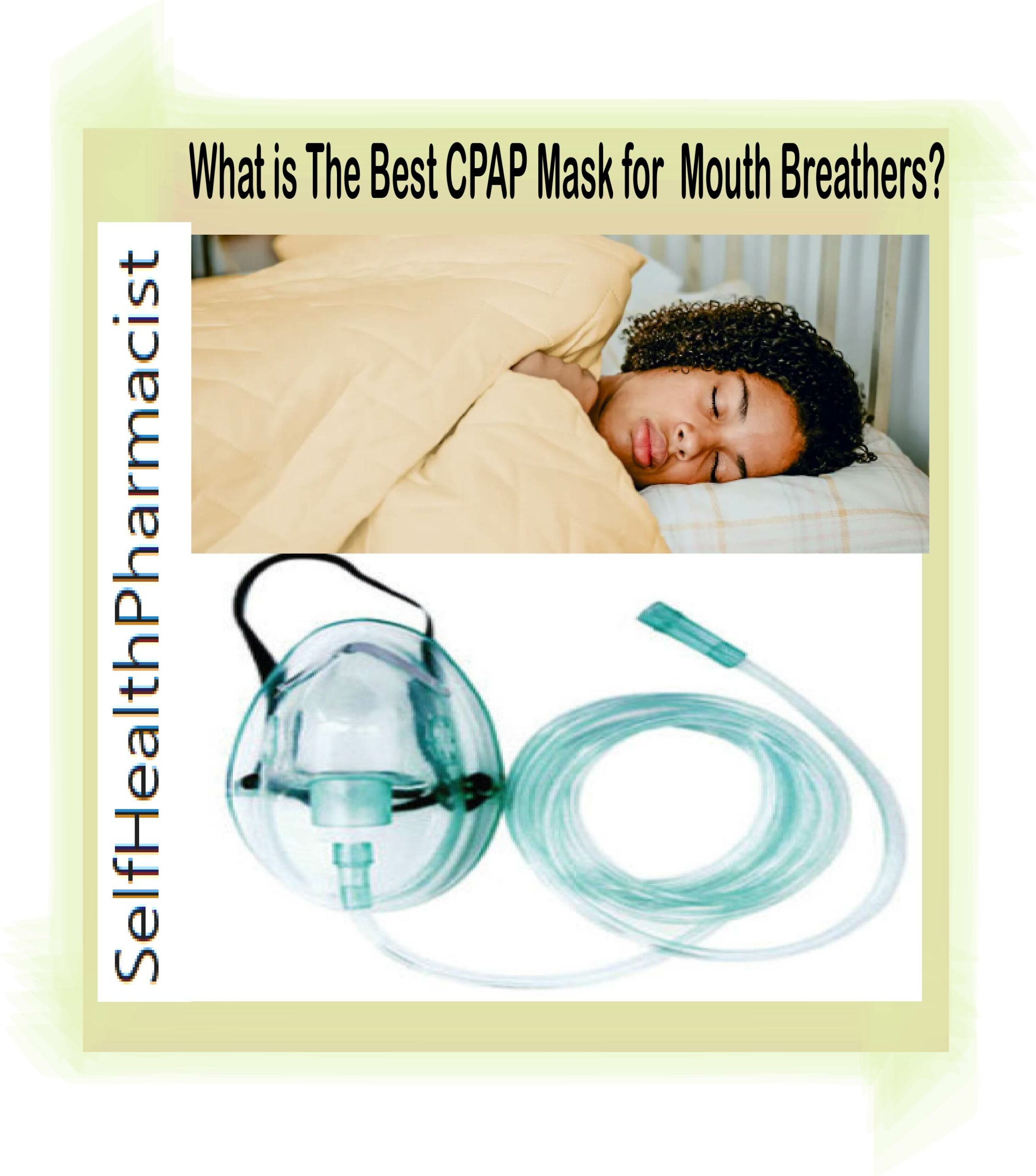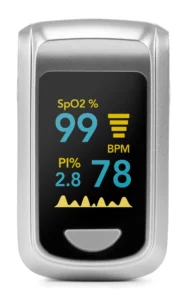Sleep apnea is a brief stoppage of breathing during sleep.
The most common type of this disorder is obstructive sleep apnea (OSA).
In OSA, the muscles in the back of the throat relax and partially or completely block the airway during sleep.
Sleep apnea causes a person to not get enough sleep at night.
Also, these attacks do not make it possible to get enough oxygen during sleep. This increases the risk of high blood pressure (hypertension), heart problems, and stroke.
Do you know that pulse oximeter can help you in detecting a sleep apnea?Pay attention to the best pulse oximeter in the market:Oxiline Pulse X Pro is currently the best fingertip pulse oximeter on the market with the easiest adjustment to your smartphone.
It can measure your Saturation Measurements and Perfusion Index in several seconds with 99% accuracy!
It can be used by both professional specialists and ordinary users at home. The latch fits snugly to the finger and does not move out during operation.The gadget consumes a minimum of energy, so it does not require frequent replacement of batteries.
Table of Contents
Can a Mouth Breather Wear a CPAP Mask?
There are people who breathe with their mouths, they are mouth breathers.
Nasal breathing for them can be difficult in many diseases: rhinitis, sinusitis, adenoids, allergies.
There may also be anatomical obstructions in the air path, such as a deviated nasal septum.
Mouth breathing can be the result of habit. Perhaps one of its reasons is that air passes through the mouth faster and easier than through the nose.
After an illness accompanied by nasal congestion, the child may simply not want to return to proper breathing. According to various data, from 5 to 75% of adults breathe through their mouths.
If you have CPAP therapy and you are a mouth breather then of course, you need to breathe through CPAP Mask calmly.
Inhalation should be shallow, and exhalation should be smooth…
The ideal CPAP therapy is when the device is used every day during the entire time of sleep, even if you lie down to sleep during the day.
If for some reason such a mode of using the device is difficult, then with moderate and mild severity of the disease, the mode can be reduced to “minimum sufficient”.
When putting on the mask for mouth breathers, adjust the tension of the fixing straps so that the mask fits snugly, but with minimal effort.
Overtightened straps can lead to skin irritation and marks on the face.
For successful therapy, create a comfortable air flow in terms of temperature and humidity using the capabilities of the CPAP device.
If you feel dryness in your mouth or nasopharynx, humidify the inhaled air. This can be done both with external room humidifiers and with a heated humidifier built into the device.
To get used to the mask for mouth breathers for the first 3-5 days, it is recommended to wear a mask (without connecting to the device) during wakefulness for 1-2 hours a day.
Then, for several days, breathe through the mask with the device turned on for 1 hour, for example, while reading a book or watching TV.

What Kind of CPAP Mask is Best for Mouth Breathers?
Full Face CPAP Masks will be the best option for mouth breathers and for those who have a blocked nose.
Full Face CPAP masks cover more space from the lower lip to the upper part of the nose, sealing both the nose and mouth.
They typically include support pieces that you apply to your cheeks and forehead to ensure proper sealing.
Advantages & Disadvantages of Full Face CPAP masks
Advantages:
- Well suited for patients who leak from the mouth despite nasal cushions or a nasal mask
- Ideal for people with high, soft, curved palate or deviated septum
- Great for mouth breathing people
- Ideal for people with frequent allergies or cold-related congestion
- Works great with high pressure CPAP settings due to wider mask coverage, making pressure more bearable and less directional
- Ideal for people who sleep on their backs
Disadvantages:
- Harder to seal due to larger surface area
- Lack of laminar flow requires higher CPAP therapy pressures and may exacerbate claustrophobia
- Air leakage from the top of the mask causes dry and irritated eyes
- The weight of the mask makes it difficult for patients to sleep on their side or stomach
- Difficulty reading, watching TV and wearing glasses
How to Choose a CPAP Mask for Mouth Breathers?
To choose any CPAP mask, you need to know its size.
Usually, manufacturers provide a pattern, by applying which to the face, you can determine which size is right for you.
But if there is no pattern, you can focus on the average values.
To determine the size of the mouth-nose masks, it is necessary to measure the distance from the bridge of the nose to the point that is located in the middle between the lower lip and the tip of the chin.
If this distance is less than 9 cm, then a mask of size S will suit you, if about 10 cm, then M, and if 11 cm or more, then L.
There are also XL size masks – for large faces…
How To Take Care of Any CPAP Mask?
The CPAP mask needs proper care.
It should be washed at least once a week, detergents should have the most neutral composition, do not contain strong fragrances, bleaching and stain-removing components, which have a roughening effect on the mask material, significantly reducing its service life.
Manufacturers usually promise the safety of the mask for about six months, but with proper and careful handling, it can last much longer, and if not handled correctly, it can crumble after a few months.
The mask straps should also be kept clean and should be washed when they get dirty. But, usually, this also has to be done at least once a week. Proper and timely care is the easiest way to avoid facial skin irritation and, moreover, extend the life of your often very expensive mask.
Final Thoughts
No matter how strong your fear of sleeping in a mask may be at the beginning, no matter if you are a side sleeper, stomach sleeper, or mouth sleeper, this is not a reason to refuse CPAP therapy. Feeling anxious about something new is normal.
Do not think that the treatment is not suitable for you just because you could not adapt to the device because of your sleeping position.
Obstructive sleep apnea is a serious condition that, if ignored, can lead to serious health problems.
FAQ
Why Can’t I Breathe Out of My Mouth With CPAP?
In a mask of any design, a special hole is always provided – a port for removing exhaled air. Therefore, if the device suddenly turns off during the patient’s night sleep, then it is still impossible to suffocate in such a mask, even if it simultaneously covers the mouth and nose.
The technology has been tested for years and is absolutely safe.
If you are afraid of suffocation, be sure to find ventilation holes.
It is also helpful to put on a mask without being connected to a machine and make sure you can breathe even if CPAP is not working.
Why Does my Mouth Get Dry When I Use my CPAP?
Dry mouth with CPAP therapy is the result of exposure to a strong air flow on the mucous membranes of the nose, mouth and pharynx.
A powerful air current evaporates moisture, and the salivary glands are not able to produce more secretions to protect the oral cavity from external irritants.
How Long Does CPAP Therapy Take?
The minimum duration of CPAP therapy to ensure its effectiveness is considered to be an average of 4 hours per day for the entire time of use, at least 5 nights per week.
